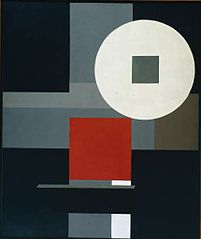The 1930s - The 1940s
Concrete art

description
Concretism is an art movement within Abstractionism of the first half of the twentieth century, characterized by images of geometric forms, often mathematically verified, without figurative or symbolic links. Some art historians consider Concretism the purest type of Abstractionism, while others consider it a form of Constructivism. It differs from Constructivism and Abstractionism because it develops by studying the laws of mathematics and deductive schemes.
The term was first used in 1861 in the “Realistic Manifesto” by Gustave Courbet. As a definition, the name entered art at the behest of Dutch artist and designer Theo Van Doesburg, who in 1930 in Paris, together with like-minded people, published the only issue of the magazine Art Concret, which became the manifesto of Concrete art.
Art forms: painting, photography, sculpture, design, as well as the flow of poetry.
Key ideas:
– The concept of perfect geometric shape. Concretism strives for geometric harmony and the ideal interaction of planes and colours.
– The composition of the picture should be simple and easy to perceive.
– The main methods of Concretism: geometry, symmetry, lack of naturalistic association, the exclusion of improvisation, symbolism or lyricism.
description
Dutch artist who practiced painting, writing, poetry and architecture. The founder and leader of “De Stijl” (“Style”), a Dutch artistic movement also known as Neoplasticism. As a poet he wrote under the pseudonym I. K. Bonset, and as a philosopher – the pseudonym Aldo Kamini.Van Doesburg was an architect by profession; he learned painting on his own. The artist created his works after long and careful calculation, using mathematical formulas. According to the theory of “Style”, compositions were to be constructed in accordance with the proportional relations between the geometric fragments that are included in their composition.
1883 - 1931
